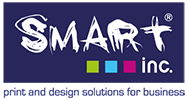How to Design a Leaflet for Your Business
When it comes to promoting your business, designing a leaflet can be an effective way to reach out to your potential customers and showcase both your brand and your products and services. You can capture the attention of your market and speak to them about your offers, sales, products and more.
However, creating a leaflet that stands out from the competition requires careful planning and attention to detail. If done with a poor design or without the right level of research, you might find that your leaflet has a negative impact on your brand!
Choose the Right Leaflet Design
When designing your next leaflet the first thing that you need to do is consider the purpose and audience of the leaflet, as well as the key elements that make up an effective design. This will be the foundation of your leaflet and how well it performs is based on how much time you spend on this stage.
Being Clear With Your Purpose and Audience
Before you even begin to design your leaflet you need to answer these questions:
- What is the message you want to convey?
- Who is your target audience?
- What do you want to achieve?
By answering these questions you’ll be able to create a design that speaks effectively to your audience and achieves a return on your investment; whether through sales or leads.
For example, if you are promoting a new product, your leaflet should highlight the benefits of the product and include a call-to-action to encourage your audience to purchase it. Or, if you’re promoting an event, your leaflet should include the date, time, and location of the event, as well as any other important information that your audience needs to know. These two distinctly different purposes require very different messaging, imagery, calls-to-action and designs.
Key Elements of a Leaflet
A well-designed leaflet should include the following key elements:
- Headline: The headline should be eye-catching and clearly communicate the main message of the leaflet.
- Body copy: The body copy should be concise and easy to read, with bullet points or short paragraphs to break up the text.
- Images: Images can help to grab the reader’s attention and reinforce the message of the leaflet.
- Call-to-action: The call-to-action should be clear and encourage the reader to take the desired action, whether it is to purchase a product or attend an event.
- Contact information: The leaflet should include contact information, such as a phone number or website, so that the reader can easily get in touch with you.
By incorporating these key elements into your leaflet design, you can create a visually appealing and effective marketing tool that will help you reach your target audience and achieve your business goals.
Creating Your Leaflet
Here are some tips to help you create a leaflet that stands out:
Use A Well Thought Out Structure
Before you start designing your leaflet, you must have a clear idea of what information you want to include. A well thought out structure will help you to organise your content and make it easier for your target audience to understand. Consider using bullet points, headings, and subheadings to break up large blocks of text and make your leaflet more visually appealing. Big walls of text are unappealing for the reader and won’t allow you to get your key points across clearly.
Align Your Design With Your Brand
Your leaflet should reflect your brand’s personality and values. Make sure to use colours, fonts, and images that align with your brand’s identity. This will help to create a consistent look and feel across all your marketing materials and make your brand more recognisable. Often leaflets encourage the reader to visit the company website, and you want your audience to recognise the brand as soon as they visit the website.
Use Images and Icons to Capture Attention
Images and icons are a great way to capture your target audience’s attention and make your leaflet more visually appealing. Make sure to use high-quality images that are relevant to your message and add value to your leaflet. Icons can also be used to highlight important information and make it easier for your target audience to scan your leaflet quickly. Again, think here about how best to avoid large blocks of text on your leaflets.
Selecting the Right Size
The size of your leaflet will depend on its purpose and the amount of information you want to include. A4 and A5 sizes are the most common for leaflets, but you can also choose from a variety of other sizes. Make sure to select the right size for your leaflet to ensure that it’s easy to read and visually appealing. By first mapping out your desired structure and the messaging you want to use you should easily be able to select the size that will help with your overall design.
Content and Messaging
Crafting a Clear Message
Your message should be concise, clear, and easy to understand. Use simple language and avoid jargon or technical terms that your audience may not understand. Focus on the benefits of your product or service, and how it can solve your customers’ problems.
Research into your audience
If you don’t already, you need to understand your target audience before creating your leaflet. Try to understand as much as you can about their demographics, interests, and pain points so that you can create a message that resonates with them. This will help your leaflets to convert your audience from readers to leads or purchasers.
Research your competitors
Researching your competitors can help you to create a message that stands out from the crowd. Analyse their leaflets and marketing messages to identify gaps in the market that you can fill. This will help you to create a message that is unique and compelling. Look for:
- Offers that your competitors are running
- The USPs and benefits that they are promoting
- The overall tone of their messaging
- Design & use of product imagery (if relevant)
Look at the performance of your previous leaflets
Analysing the performance of your previous leaflets can help you to identify what works and what doesn’t. Look at the response rates, conversion rates, and feedback from customers to identify areas for improvement. Use this information to create a message that is more effective and resonates with your target audience.
Printing and Distribution
Selecting Paper and Finishing
When designing a leaflet, you should also consider the type of paper and finishing that will best suit your business needs. The choice of paper can affect the overall look and feel of your leaflet, as well as its durability and cost. Both of these can have a huge impact on how profitable a leaflet campaign can be.
For a professional look, you may want to consider using a high-quality paper such as glossy or matte paper. Glossy paper has a smooth and shiny finish that can make colours stand out, while matte paper has a more subdued look that’s ideal for a more sophisticated design.
As well as your paper selection, the finishing of your leaflet can also make a big difference. Lamination, for example, can protect your leaflet from damage and give it a more polished look. Other finishing options like folding, perforation, and die-cutting can add visual interest and make your leaflet stand out from the competition.
Strategies for Distribution
Once you’ve designed your leaflet, it’s time to think about how you’ll distribute it to your target audience. Here are a few strategies to consider:
- Door-to-door: This is a classic way to get your leaflet into the hands of your customers. You can hire a leaflet distribution company to deliver your leaflets directly to people’s letterboxes.
- In-store: If you have a physical store, you can display your leaflets at the checkout counter or on a brochure rack. This can be an effective way to reach customers who are already interested in your products or services.
- Events: If you’re attending a trade show or other event, you can hand out your leaflets to attendees. This can be a great way to generate interest in your business and attract new customers.
- Direct mail: You can also send your leaflets directly to your target audience through the mail. This can be a more expensive option, but it can be effective if you have a highly targeted mailing list.
Remember to consider your target audience and their preferences when deciding on a distribution strategy.
Partner with a Specialist Leaflet Design & Printing Company
Designing and printing a leaflet for your business is a task that requires both creativity and technical expertise. While you may have a clear idea of what you want your leaflet to look like, it can be challenging to bring that vision to life on paper. This is where partnering with a specialist leaflet design and printing company can make a significant difference.
By working with a professional company like Smart Inc, you can access a range of leaflet design and leaflet printing services that can help you create a leaflet that stands out from the competition.
For more information on our services or to speak to our team about your next project, contact us on 01992 410960 or info@smart-inc.co.uk.
Categories
- Uncategorised (13)
Recent Posts
Recent Comments
Archives
Categories
Categories
- Uncategorised (13)



